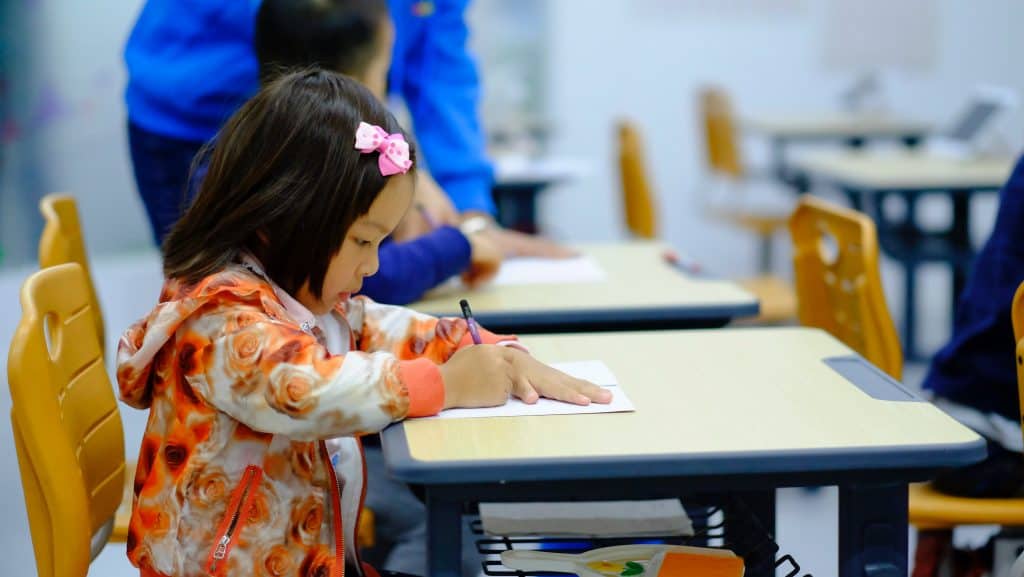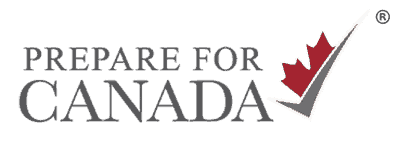
Moving to Canada with young children? Then you’ll want to read this overview of schooling in Canada to help your children adapt to school smoothly. Canada has one of the best school systems in the world to help your children grow and prosper. This is important for newcomers who often want to provide their children with more opportunities and access to education in Canada. Learn more about schooling in Canada including the systems, education levels, and process to register your children in school.
“Education is the most powerful weapon which you can use to change the world.”
Nelson Mandela
Schooling in Canada is Ranked in the Top 5
The Best Countries for Education global survey shows that Canada ranks #4. The survey measured the following three country attributes:
- Is the public education system well-developed
- Do people consider attending university
- Does the country provide top-quality education.
Top Five Countries:
#1 United States
#2 United Kingdom
Advertisement:
#3 Germany
#4 Canada
#5 France.
As the report identifies “Today’s young people will, in the coming years, be governing the world. Their thoughts and actions will be shaped by what they know and experience, making education, in many ways, one of the best predictors of a nation’s future success.”
An Overview of Schooling in Canada
Each province and territory in Canada develops curriculum and policy. And, because of this, both may be slightly different across the country. Still, schooling in Canada has many common elements such as the school systems, levels of education, and enrollment process.
Advertisement:
In Canada, there are three school systems:
- Public schools
2. Private schools
3. Homeschooling.
You can choose which school system your child will attend. To learn more about the provincial school systems follow the links in the Provincial and Territorial Ministries of Education section below.
1. Public Schools in Canada:
The government funds public schools in Canada, and most children attend public schools. So you don’t have to pay for your child to attend public school. However, you pay for school supplies and extracurricular activities such as field trips.
District school boards manage how public schools operate and are responsible for activities such as hiring teachers and opening new schools.
Over 95% of Canadians choose public school education for their children.
CANADIAN ASSOCIATION OF PUBLIC SCHOOLS – INTERNATIONAL
2. Private Schools in Canada:
If you choose to send your children to a private school you will have to pay tuition and other fees. The government usually does not fund private schools, so these schools can be costly to attend. However, private schools may provide a focus that public schools don’t provide and that you are willing to pay for. For example, private schools in Canada may focus on a specific area such as:
- a specialized or challenging academic program
- faith-based learning
- cultural-based learning, or
- elite sports academies.
3. Homeschooling in Canada:
Homeschooling is acceptable in every province in Canada. If you want to teach your children at home, you will have to meet certain legal requirements. Each province has requirements, so you have to research laws to ensure you meet the regulations.

Related Posts:
Choosing a Private Tutor for Your Child
5 Popular Book Series Your Children Should Read
Educating Newcomer Parents About Bullying
Higher Education Offers Benefits to Newcomers
What to Know About Living in Kitchener-Waterloo, Ontario
Settle in Canada with Confidence and Ease
Schooling in Canada: Education Levels
Four levels within the school system follow this structure:
- Pre-school (or nursery school)
- Kindergarten
- Elementary school (or primary school)
- High school (or secondary school)
Pre-school:
Pre-school programs are like daycare programs for children aged two to four. You don’t have to send your children to preschool. However, preschool can help your child build language skills if they don’t speak English or French (Canada’s official languages). As well, preschool can help young children develop social and emotional skills to help them adjust to schooling in Canada. Most preschools in Canada are private, so you will have to pay a cost.
Each school has a catchment area, (an area that defines which school your child will attend). Usually, children attend a school closest to their home and within the school’s catchment area.
Kindergarten:
Most children attend kindergarten at age five. You can register your child at the school closest to your home. Children must attend kindergarten in most provinces. Kindergarten is free.

Elementary Schools in Canada: Grade One to Eight
Children attend elementary school (also known as primary school) in September the year they turn five. But, if you arrive after September you must enroll your child as soon as you arrive. For example, if you arrive in Canada in October, you must register your child in October. You can contact the School Board (see links below for provincial ministries of education) when you arrive.
Children attend elementary school from grades one to eight. Some school districts may have a middle school for grades six to eight. But, that depends on the structure of the school district.
Generally, school curriculums cover these subjects:
- Reading
- Writing
- Math
- Geography
- History
- Science
- French (may be required in some schools)
- Art
- Music
- Physical education
High Schools in Canada: Grade Nine to Twelve
After children complete elementary school, they attend high school from grades nine to twelve. The high school system prepares students to attend either:
- vocational school (typically two-year programs that focus on fields such as plumbing, welding, or esthetics. Vocational schools are also called trade schools)
- Community College (typically two-year programs that combine academic and industry opportunities), or
- University (typically four-year programs with a focus on academic or professional programs such as medicine, dentistry, law, and engineering).
The government does not fund post-secondary schooling in Canada. And, many parents save for years so that their children can attend post-secondary education. Investing in a Registered Education Savings Plan is a common way for parents to save for higher education in Canada. In high school, students can meet with Guidance Counsellors who can help your child:
- make career choices
- achieve better grades, and
- handle personal or social issues.
How to Register Your Child for Schooling in Canada:
Settlement agencies can help you to register your children in school. And you can read more about free services in Canada to help newcomers settle.
You’ll need these documents to register your child in a school in Canada:
- Your child’s birth certificate or passport to show proof of age
- Proof of address: copy of a bank statement, phone or electric bill, or apartment lease with your name and address
- Proof of guardianship: you need this if your child is under 18 years of age and does not live with a parent
- Immunization record
- Proof of student’s immigration status: with one of the following:
- Permanent Resident Card
- Confirmation of Permanent Residence (IMM5292) or Record of Landing (IMM 1000).
When to Register Your Child in School
You have to enroll your children in school as soon as you arrive in Canada. The school year starts in September and ends in June. But, if you arrive in Canada after the school year begins, your child can still attend school.
Canada guarantees an education to all children, including those with disabilities. Depending on the child’s needs, children with disabilities will either attend:
- regular classrooms and receive additional help, or
- special classes or schools.
Assessing Math and English Language Skills
Newcomer students may have to complete a math and English language skills assessment. The assessment will identify:
- what level your child is at, and
- what support your child may need to achieve success in school.
The results will help teachers understand what your child already knows. And if you have questions about your child’s placement level, you can talk to their teacher about their results. It’s helpful if you can provide your child’s previous report card or other school information for the assessment.
English as a Second Language (ESL) in Schools
Children who don’t have strong language skills that match the grade level can access programs to help them learn English. ESL classes are often regularly scheduled courses, or in place of English taught to those who already speak the language.
Provincial and Territory Ministries of Education
For more information, check out the Ministry of Education for the province where you plan to settle.
Alberta
Ministry of Education
British Columbia
Ministry of Education
Manitoba
Ministry of Education
New Brunswick
Department of Education and Early Childhood Development
Newfoundland and Labrador
Department of Education
Northwest Territories
Department of Education, Culture and Employment
Nova Scotia
Department of Education
Nunavut
Department of Education
Ontario
Ministry of Education
Prince Edward Island
Department of Education and Early Childhood Development
Quebec
Éducation, Loisir et Sport Québec
Saskatchewan
Ministry of Education
For more information, tools, and free webinars about living in Canada visit our Settling in Canada resource page. We’ll help you to settle in Canada successfully!
Corinna Frattini is the content marketing strategist at Prepare for Canada and contributes articles related to working in Canada. With a background in human resources and leadership development, her articles focus on what Canadian employers seek and how newcomers can continue their careers in Canada.

